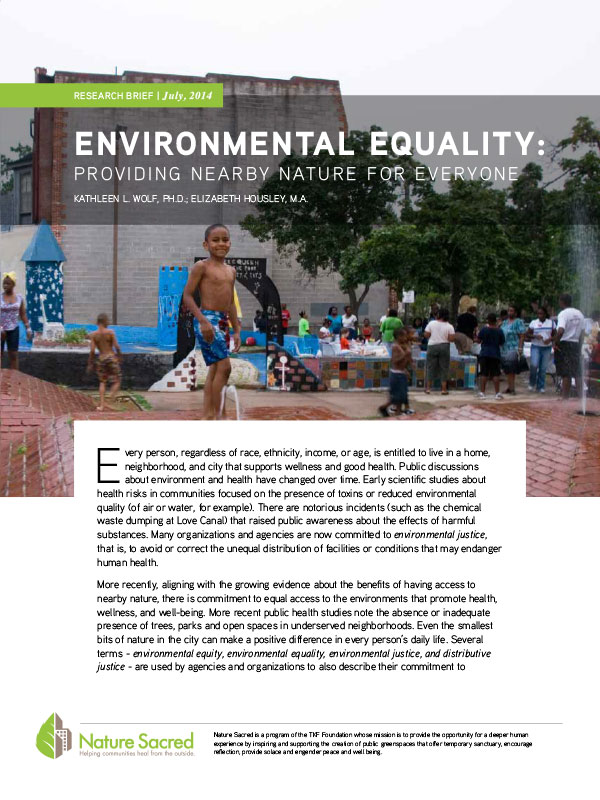Report
Environmental equality: Providing nearby nature for everyone
Publication Date:
Every person, regardless of race, ethnicity, income, or age, is entitled to live in a home, neighborhood, and city that supports wellness and good health. Public discussions about environment and health have changed over time. Early scientific studies about health risks in communities focused on the presence of toxins or reduced environmental quality (of air or water, for example). There are notorious incidents (such as the chemical waste dumping at Love Canal) that raised public awareness about the effects of harmful substances. Many organizations and agencies are now committed to environmental justice, that is, to avoid or correct the unequal distribution of facilities or conditions that may endanger human health.
More recently, aligning with the growing evidence about the benefits of having access to nearby nature, there is commitment to equal access to the environments that promote health, wellness, and well-being. More recent public health studies note the absence or inadequate presence of trees, parks and open spaces in underserved neighborhoods. Even the smallest bits of nature in the city can make a positive difference in every person’s daily life. Several terms - environmental equity, environmental equality, environmental justice, and distributive justice - are used by agencies and organizations to also describe their commitment to providing parks, gardens, and open spaces to all city residents. This briefing, using the term environmental equality, examines the issues and benefits that are important to consider in community planning for green space.
